Please view our updated COVID-19 guidelines and visiting procedures →.
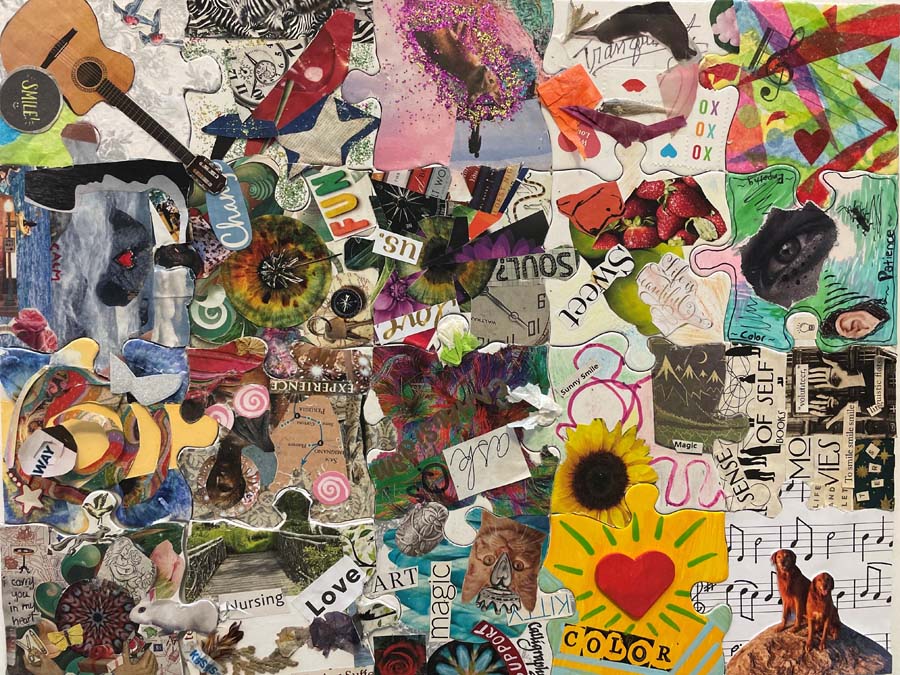
The arts enrich everyone’s days, and they are equally important at the end of life. At The Connecticut Hospice, we live out this philosophy. We employ music and art therapists to work with patients and families, both in our facility and in homecare settings, and use dozens of volunteers to fill our halls with art and the sound of music.
We also keep a large library of CDs and CD players that can be borrowed by patients and families to be played at bedsides, and we hear everything from opera to jazz to Disney songs, as people connect and reconnect through the music of their past lives. For our patients diagnosed with dementia, music is so important that we have tiny MP3 players embedded in teddy bears, which have been programmed to play music chosen by families to evoke positive thoughts and feelings. Often, it comes from an era long ago, and taps into old memories.
That technique begins to touch on art therapy, which is different from performing on an instrument or drawing in front of a patient. Art therapists are specially trained to use their talents to help patients and families process emotions, fears, and need for closure. They work with patients to create memorials to leave behind. One patient used our help to make videos for the next birthdays of each of her loved ones. Another patient worked with our art therapist to illustrate the lyrics of a song she wrote with our music therapist, which was then recorded and given to the family as a gift. Some make physical tokens of their love, or collages displaying life memories.
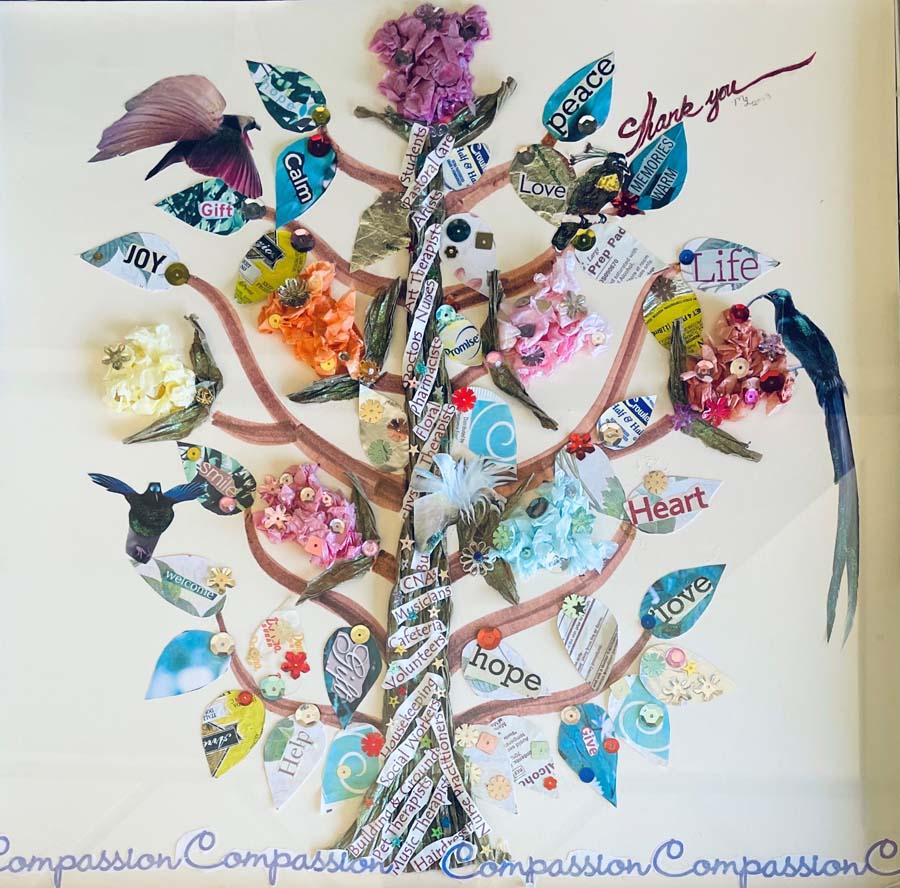
Children especially flock to our arts staff to work on pieces that often show what they cannot express directly. They may be frightened or confused, and just the process of sitting down to make something can both calm and direct them. In addition, it gives space for other members of a family to have conversations in which they are not involved.
One staff artist specializes in portraits. She draws people from a photograph provided by the patient or their loved one. Families then have that drawing to keep, and often display them at celebrations of life or other ceremonies.
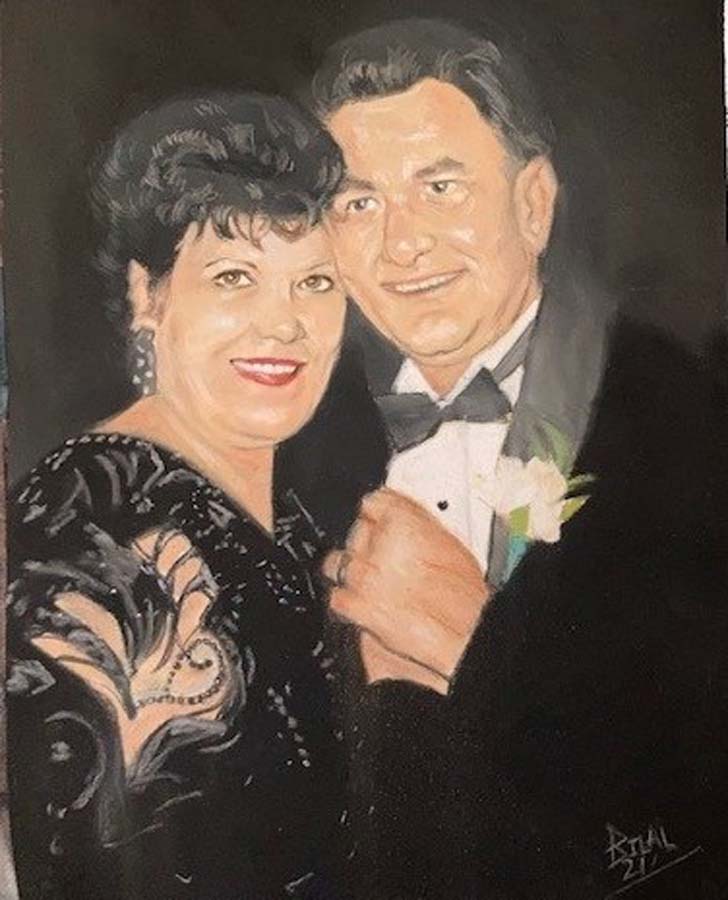
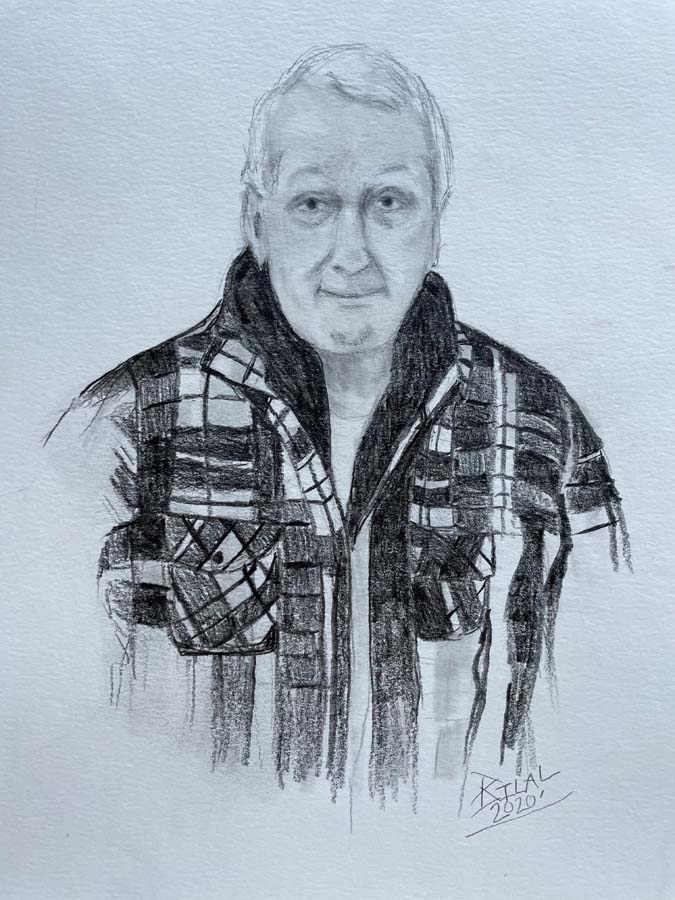
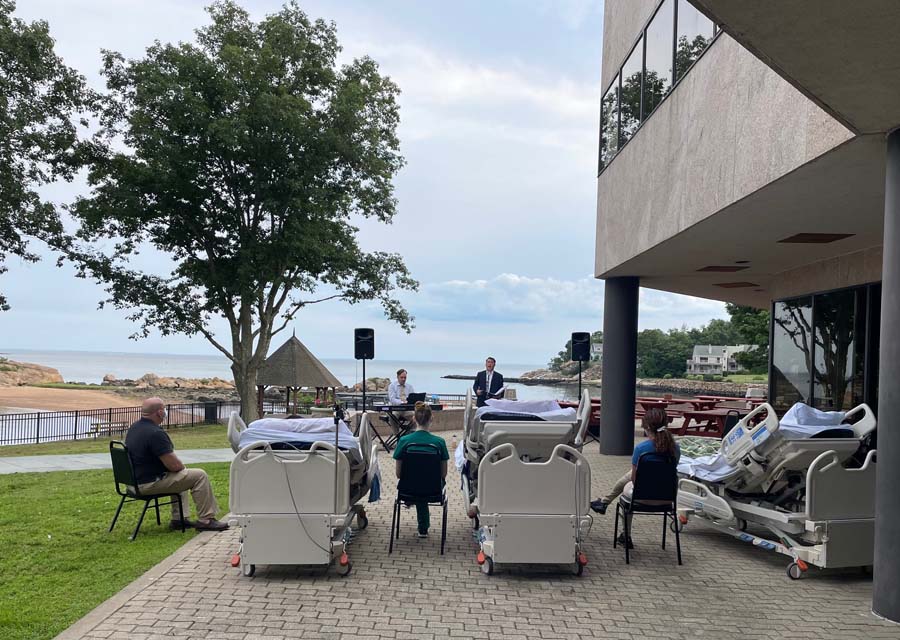
For staff members, being surrounded by art and music makes a difficult job easier. We all know that music and art are soothing, and we all take advantage of its presence to slow our breathing or change our moods. Many of our volunteers who play, either on our lobby piano, or in the wings of the patient floor, are longtime regulars, and we look forward to their “shifts”, when we can enjoy our favorite selections—sometimes by request. Occasionally, several families will connect over an impromptu concert, and even stand around the musician, singing together. At Christmastime, carols are a must for many.
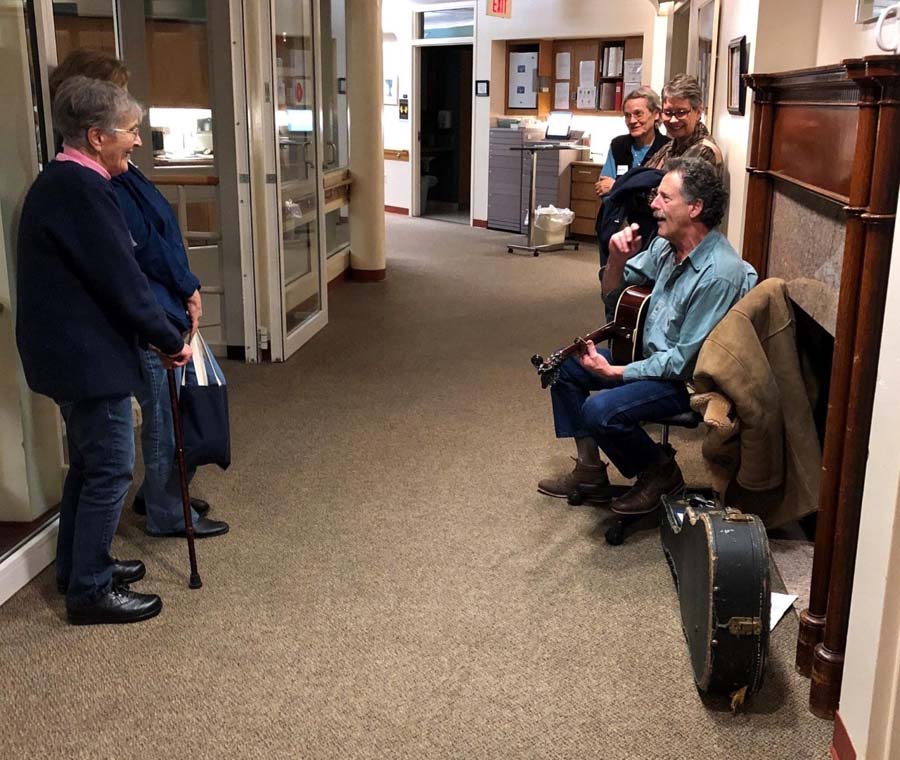
- by Hannah Righter, Connecticut Hospice Director of Arts
(For this story, we’re going to call the patient Joe and his wife Sally.)
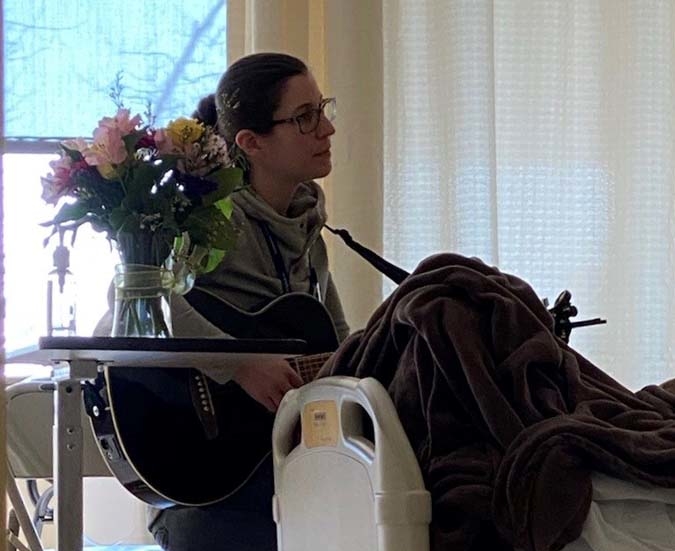
Both Joe and Sally had remarked on the soothing, cathartic, and memory evoking benefits of music during previous sessions, though what occurred during this visit was truly spectacular.
In this session, Joe was lying in his hospital bed with Sally sitting beside him. Both welcomed me into the room with a warm smile and shake of the hand. The session began with a song that I learned per the wife’s request prior to this visit. During the song, Sally held Joe’s hand and softly sang along. Once the song was over, Joe began sharing memories of his travels throughout the years, which then made Sally think of another song, which I played on my guitar and sang. Joe then smiled while vividly describing Rome, Italy, sharing that of all his travels, this location was a favorite of his and his wife’s. Joe then stated “you're not just bringing back memories, you're bringing back a picture. I can actually see it.” Now, what made this statement exceptionally significant, is that Joe had lost his vision and was legally blind at that time. Joe then went on to laugh and smile while recounting fond memories of this trip, one more vivid than the next. The session continued with more patient preferred music, laughter, storytelling, and singing along. At the end of this visit, Sally walked me to the door and while expressing gratitude, stated “whenever I tell him you're coming he really perks up.”
This visit details the ability patient preferred music has on evoking memories and bringing patients and their loved ones back to a very special time and place in their lives. This act of reminiscing can be just as meaningful and cathartic for families, especially when their loved ones (patients) are at a point in which they can no longer communicate verbally. It provides the opportunity for them to share stories beyond symptom and diagnosis. This helps paint the picture of important aspects throughout their loved one’s life and allows us to get to know (and treat) them as a whole.
Also, because of this strong emotional connection between music and memories, patients who may not be able to speak coherent sentences can sing along to songs they enjoyed listening to in their younger years. We see this type of engagement (maintaining eye contact, tapping to the beat, singing along) quite frequently and is just as beneficial to our patients as their loved ones who are able to share these meaningful interactions through music.
- by Hannah Righter, Connecticut Hospice Director of Arts
(For this story, we’ll be referring to the patient as Maggie.)
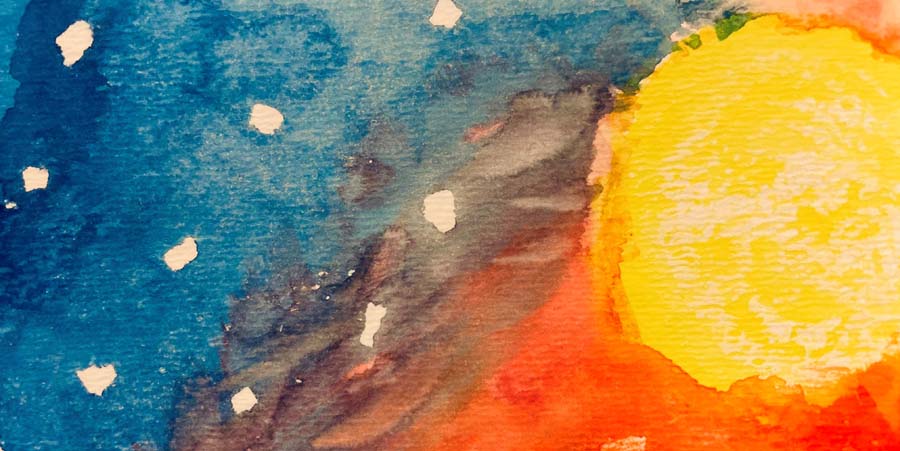
Maggie was having a particularly difficult day and had been referred to music therapy to provide emotional support and help decrease some of the anxiety she was experiencing at the time. When offered music, Maggie initially declined, requesting “sit with me and talk.” After some rapport building conversation, Maggie expressed desire to create artwork with the theme of "wind on a stormy night," stating that to her, this acts as a reminder that "even when it's stormy, we have a place that is safe [CT Hospice] and we have each other." Maggie actively participated in the art making process through placing tape on the paper to indicate where the stars would go, directing where to start and stop the swirls that represent the wind, and selecting the colors to use. Throughout the session, Maggie held her hands to her chest, made positive remarks, and laughed and smiled while exclaiming "I'm an artist!"
Maggie reminisced about time spent with friends and family and shared her belief that everyone should be treated, respected, and loved equally. At the end of this visit, Maggie spoke again about the theme of support that she felt was represented by the painting. Maggie then held my hand while stating "we have each other." Maggie went on to express the profound support she has received while at Hospice and how comfortable she felt following this session.
This session is a prime example of using art and music (painting in this case) to support the conversation and need(s) in that moment… to create an environment in which this individual felt safe and comfortable expressing herself, and essentially use the arts to address clinical, non-arts related goals (self-expression, coping, emotional support).
Sometimes there are not words to express exact feelings, especially in this setting, though there is a song that resonates or artwork that can be created. In this case, the patient was experiencing increased anxiety and was able to use the arts to express her feelings in a creative and non-threatening way, process her emotions, and create a piece of artwork that represented her own resilience and support system.
There are so many anecdotes like these two, and they all illustrate the importance of the arts in meeting the needs of patients and families in innovative ways. The last such story involves a patient with advanced dementia, who no longer spoke or responded to anyone. His wife requested what she referred to as “their song”, and the music therapist played that for them by his bed. He opened his eyes, and said “Shall we dance?”. We then discovered that the couple had been competitive ballroom dancers many years ago, and that the song was the one they used in competitions. Such is the power of music to evoke memories, and, in this case, abilities!
The arts represent just one of the ways in which hospice care can reach people at the end of life, helping them find peace and closure. Although we have skilled professionals who do this on a daily basis, music and art are tools that everyone can use in such situations, and bring smiles through the tears.

As a not-for-profit, we depend on generous donors to help us provide customized services and therapies that aren’t completely covered by Medicaid, Medicare, or private insurance.
Please make a gift to help us sustain the highest standard of care.
Admissions may be scheduled seven days a week.
Call our Centralized Intake Department: (203) 315-7540.